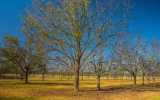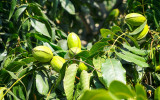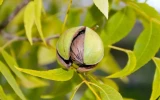Why the Fastest Producing Pecan Tree Is the Pawnee
Known for its early and reliable production, the Pawnee variety has gained popularity among pecan enthusiasts and commercial growers alike. If you're interested in a faster return on your planting investment, here's why the Pawnee pecan tree is considered the fastest-producing among all its counterparts.
Pawnee pecan trees begin to produce nuts much earlier than most other varieties, often within just four years of planting. This is a significant advantage, as most pecan trees take between 6 and 10 years to bear fruit. It also produces an impressive quantity of high-quality nuts.
This tree is not just a popular choice among growers for its rapid maturity; it embodies a blend of agricultural efficiency and adaptability. In this article, we delve into the reasons why the Pawnee pecan tree is heralded as the fastest-producing variety, exploring its unique characteristics, growing conditions, and the benefits it offers to both commercial growers and home gardeners.
Summary
- The Pawnee pecan tree stands out in the world of agriculture for its fast production, large nut size, and delicious flavor.
- Bearing nuts within 4 years rather than 6–10 years is a significant advantage, as it means the orchard reaches profitability much sooner.
- Pawnee's precocious (early) bearing habit is consistently reported as one of its best traits by nut growers and agricultural sources.
- Reaching productive maturity 2–6 years sooner than average varieties represents a substantial difference in the orchard establishment timeline.
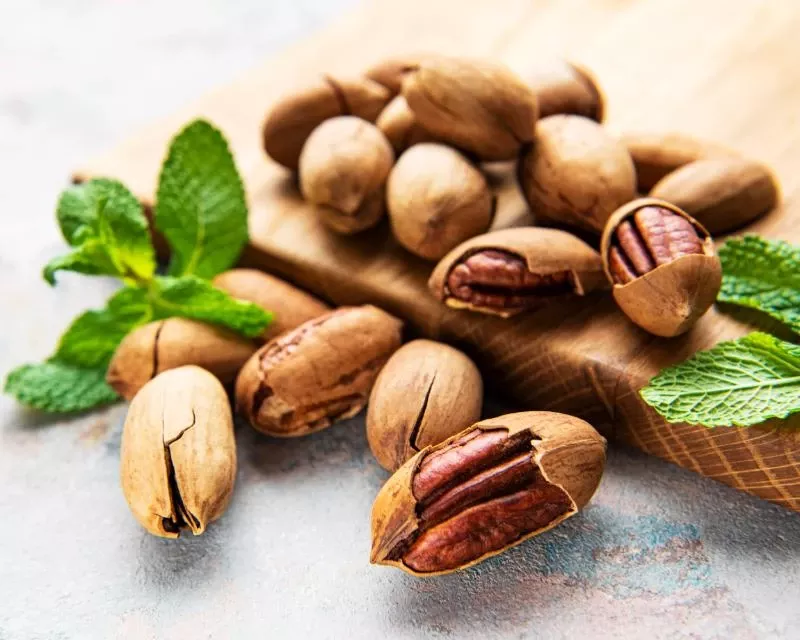
On this page:
The Pawnee Is the Fastest Producing Pecan Tree
Pawnee pecans are known for their large nut size and early nut maturity. With a typical harvest in the third week of September, Pawnee pecans grow relatively fast. These trees are heat and drought-tolerant, making them an excellent choice for southern climates.
Several key characteristics that make the Pawnee pecan tree the fastest-producing variety are its early nut maturity, large nut size and quality, adaptability, resistance to pests and diseases, and breeding for productivity.
Early nut maturity
Pawnee trees are known for their very early nut maturity. The average harvest time for Pawnee nuts is typically in the third week of September, with some nuts beginning to open even earlier in the month.
Pawnee pecan trees begin to produce nuts much earlier than most other varieties, often within just four years of planting. This is a significant advantage, as most pecan trees take between 6 and 10 years to bear fruit.
The Pawnee pecan tree is known for its faster production compared to other pecan tree varieties. While pecan trees generally grow at a moderate rate, adding 2-4 feet of height per year, the Pawnee variety reaches maturity earlier than most. This means that you can expect to see nuts on the tree sooner than you would with many other varieties. In fact, some pecan trees can take several years to begin nut production, but the Pawnee often produces its first crop of pecans in a shorter period.
Large nut size and quality
Alongside its early maturity, Pawnee produces large-sized nuts of high quality, which is advantageous for both commercial and personal growers. The nuts produced by Pawnee are larger than average, making them desirable to consumers and contributes to their premium pricing in the market.
Besides its swift production, the Pawnee pecan tree also boasts large, delicious nuts, perfect for both snacking and baking. This variety offers an exceptional combination of flavor, yield, and ease of cracking, making it a favorite among pecan aficionados. No wonder the Pawnee pecan is regarded as a top choice for those seeking speedy pecan production without sacrificing quality or taste.
The Pawnee produces an impressive quantity of high-quality nuts. In fact, its yields for years 1–10 are similar to 'Sumner' and about half of 'Cape Fear'. This feature is quite beneficial for both hobbyists and industry professionals seeking a steady, fast-growing harvest.
Adaptability
The Pawnee variety thrives across a wide range of pecan-growing regions, including northern areas, like northern Georgia, demonstrating good adaptability to various soil and climate conditions.
Climate
Mild winters and long, warm summers are ideal. It thrives in full sun. The Pawnee is notably more cold-tolerant than many other pecan varieties.
Soil requirements
Well-drained, fertile soil is preferred. Pawnee trees are somewhat tolerant of different soil types but perform best in deep, well-drained, loamy soils rich in organic matter. They grow best in slightly acidic to neutral soil with a pH between 6.0 and 7.0.
Before planting, make sure to analyze and amend the soil according to the tree's requirements. It's also important to provide adequate space for the tree roots to grow. For more details on establishing a pecan tree, check the Oklahoma State University fact sheet.
Resistance to pests and diseases
Pawnee shows good resistance to certain pests and diseases, which contributes to its reliable productivity.
- Disease resistance: Pawnee pecans exhibit some level of resistance to common pecan diseases, reducing the need for frequent treatments and overall maintenance costs. It has notable resistance to pecan scab, a major disease affecting pecan trees, especially in humid climates.
- Pest resistance: While no pecan variety is completely pest-free, the Pawnee shows a good level of resistance to common pests like pecan weevils, aphids, and mites.
Bred for productivity
The Pawnee was specifically developed to exhibit traits such as early bearing and large nut size, contributing to its high and consistent yields over its lifespan. It has been optimized for maximum yields.
The Pawnee pecan tree is a result of dedicated horticultural research and breeding. Developed by the USDA Agricultural Research Service, this variety was introduced in the 1980s as a high-yield, early-maturing option.
The Pawnee pecan tree typically begins to bear nuts within just a few years from planting, making it an attractive choice for pecan growers looking for faster returns on investment. However, the Pawnee, like most pecan trees, tends to have alternate bearing years. In an "on" year, the tree produces a higher yield of nuts, followed by a lower output in the subsequent "off" year. Despite this alternating pattern, the Pawnee remains a high-performance producer of usable kernels, with consistent quality throughout its cycles.
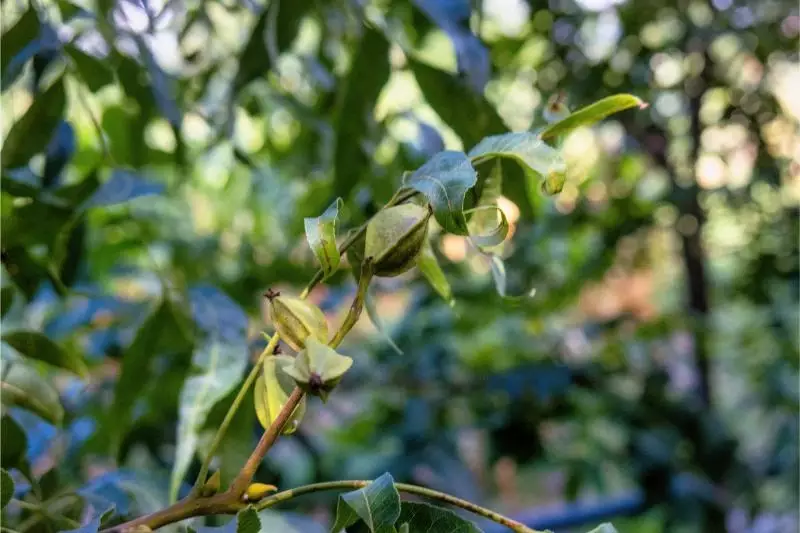
Origin and characteristics
The Pawnee Pecan Tree is the result of a cross between the 'Mohawk' and 'Starking Hardy Giant' varieties. This crossbreeding occurred in Brownwood, Texas, back in 1963. Since then, it has gained popularity throughout the Western and Northern growing regions of the United States, as well as in the Southeast.
As a variety of the Hardy Pecan (Carya illinoinensis), the Pawnee Pecan has become a symbol of Southern heritage and American tradition. With its rich historical background and fantastic fruit-bearing qualities, it's no wonder why the Pawnee Pecan Tree is so treasured by pecan enthusiasts.
Quality flavor
Pawnee pecans have a rich, buttery flavor that is highly valued by both consumers and processors. This cultivar produces large, delicious nuts with a thin shell that is easy to crack. Although the tree has alternate bearing years, the kernel quality does not decline dramatically in high-yield years, maintaining a consistent and marketable product for growers.

Growing conditions
The Pawnee pecan tree is adaptable to a range of climates but thrives best in regions that offer a long growing season. Key considerations for growing Pawnee pecan trees include:
Watering and care
Regular irrigation is crucial, especially in the drier climates and during the nut development phase.
During the establishment stage, provide the tree with sufficient, consistent moisture, especially during hot and dry seasons. As the tree matures, it becomes more drought-tolerant but still benefits from new watering during prolonged dry periods.
In addition to irrigation, applying mulch around the base of the tree helps conserve moisture and suppress weeds. To prevent bacterial or fungal diseases, avoid overhead watering, which can create a humid environment around the tree's foliage.
Pruning and maintenance
Start pruning during the early years of growth, focusing on creating a strong central leader and well-balanced scaffolding branches. Remove any dead, damaged, or crossing limbs to improve air circulation and sunlight penetration. Make sure you follow disease prevention guidelines while pruning.
Mature trees mainly require minimal pruning for maintenance. Moreover, ensure your tree is protected from pests and diseases by keeping the surrounding area clean and monitoring it regularly.
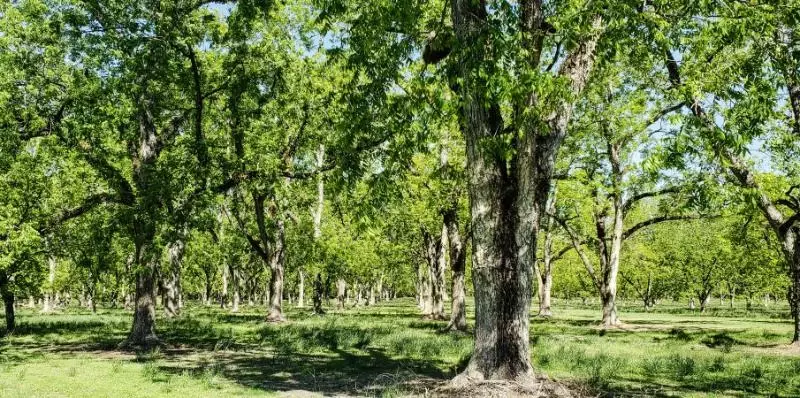
Cross-pollination requirements
When choosing a companion tree for your Pawnee pecan, it is crucial to select a variety that complements its pollination period. Good pollinator varieties for Pawnee include Lakota, Sumner, Zinner, Desirable, Elliott, and Ellis. These trees ensure that pollen is dispersed effectively during Pawnee's receptive window.
Advantages of Fast Production
Economic benefits
The early and robust production of the Pawnee pecan tree offers several economic benefits:
- Quick return on investment: Growers can expect an earlier return on their investment due to the rapid onset of nut production. The early harvest time helps meet early market demand; this could lead to higher prices for your pecans at the beginning of the season.
- Increased yield: The early maturity of the tree allows for more productive years, increasing the overall yield over the tree's lifespan. Despite not being an extremely precocious cultivar, Pawnee produces good yields similar to Sumner and about half of Cape Fear. This means consistent income over the years.
Sustainability and resource efficiency
Fast-producing varieties like Pawnee contribute to sustainable agricultural practices:
- Reduced resource use: Earlier fruiting reduces the duration of resource-intensive care required before the trees become productive.
- Land efficiency: Faster production means growers can achieve higher yields on the same amount of land, conserving space and resources.

Harvesting Practices
Harvest timing
The best time to harvest pecans from your Pawnee pecan tree is when the shucks start to open and reveal the nut inside. Typically, this occurs in the early fall, which is an advantage as Pawnee pecan trees tend to produce nuts earlier than other varieties. Make sure to monitor your tree closely and harvest your pecans as soon as the majority of shucks have opened, to ensure you get the best quality and taste.
Harvest methods
There are several methods you can use to harvest pecans, but for home growers with Pawnee pecan trees, the following techniques are commonly suggested:
- Shaking: When the nuts are ready for harvest, you can gently shake the limbs of your tree using a long pole to release the pecans.
- Hand-picking: If the nuts are within reach, you can simply pick them off the tree by hand.
Remember to collect the fallen pecans promptly, as leaving them on the ground for too long may result in mold or insect infestation. Also, make sure to wear gloves during the process as pecan tree sap can irritate the skin.
Pecan processing
Once you have harvested your pecans, it's essential to process them quickly to preserve their quality. Here are some general steps to follow:
- Cleaning: Rinse and remove any debris from your pecans.
- Drying: Spread the pecans out on a clean surface, preferably indoors, and let them air-dry for a few days. This will help the nuts lose some moisture and enhance the flavor. Be sure to rotate them daily to ensure even drying.
- Shelling: After the nuts have dried and lost some water weight, shell them using a nutcracker. Please note that Pawnee pecans have thinner shells, making them easier to crack than other varieties.
- Storing: Store shelled pecans in airtight containers or vacuum-sealed bags and keep them in the refrigerator or freezer to prolong their freshness.

